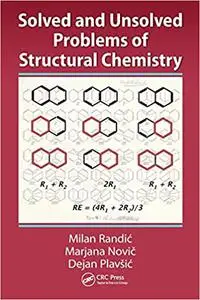Milan Randic, Marjana Novic, Dejan Plavsic, "Solved and Unsolved Problems of Structural Chemistry"
English | 2016 | pages: 482 | ISBN: 1498711510, 0367862263 | PDF | 14,5 mb
English | 2016 | pages: 482 | ISBN: 1498711510, 0367862263 | PDF | 14,5 mb
Solved and Unsolved Problems of Structural Chemistry introduces new methods and approaches for solving problems related to molecular structure. It includes numerous subjects such as aromaticity—one of the central themes of chemistry—and topics from bioinformatics such as graphical and numerical characterization of DNA, proteins, and proteomes. It also outlines the construction of novel tools using techniques from discrete mathematics, particularly graph theory, which allowed problems to be solved that many had considered unsolvable.
The book discusses a number of important problems in chemistry that have not been fully understood or fully appreciated, such as the notion of aromaticity and conjugated circuits, the generalized Hückel 4n + 2 Rule, and the nature of quantitative structure–property–activity relationships (QSARs), which have resulted in only partially solved problems and approximated solutions that are inadequate. It also describes advantages of mathematical descriptors in QSAR, including their use in screening combinatorial libraries to search for structures with high similarity to the target compounds.
Selected problems that this book addresses include:
- Multiple regression analysis (MRA)
- Insufficient use of partial ordering in chemistry
- The role of Kekulé valence structures
- The problem of protein and DNA alignment
Solved and Unsolved Problems of Structural Chemistry collects results that were once scattered in scientific literature into a thoughtful and compact volume. It sheds light on numerous problems in chemistry, including ones that appeared to have been solved but were actually only partially solved. Most importantly, it shows more complete solutions as well as methods and approaches that can lead to actualization of further solutions to problems in chemistry.
My Link



